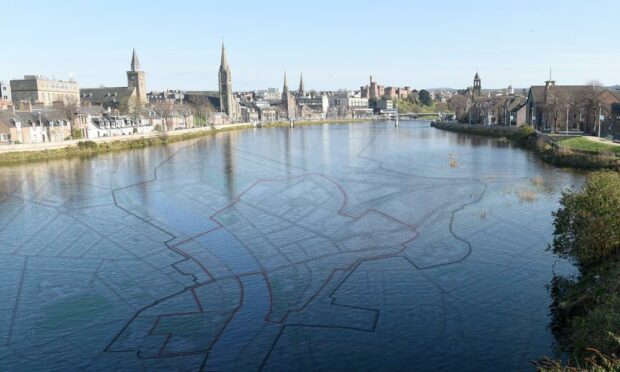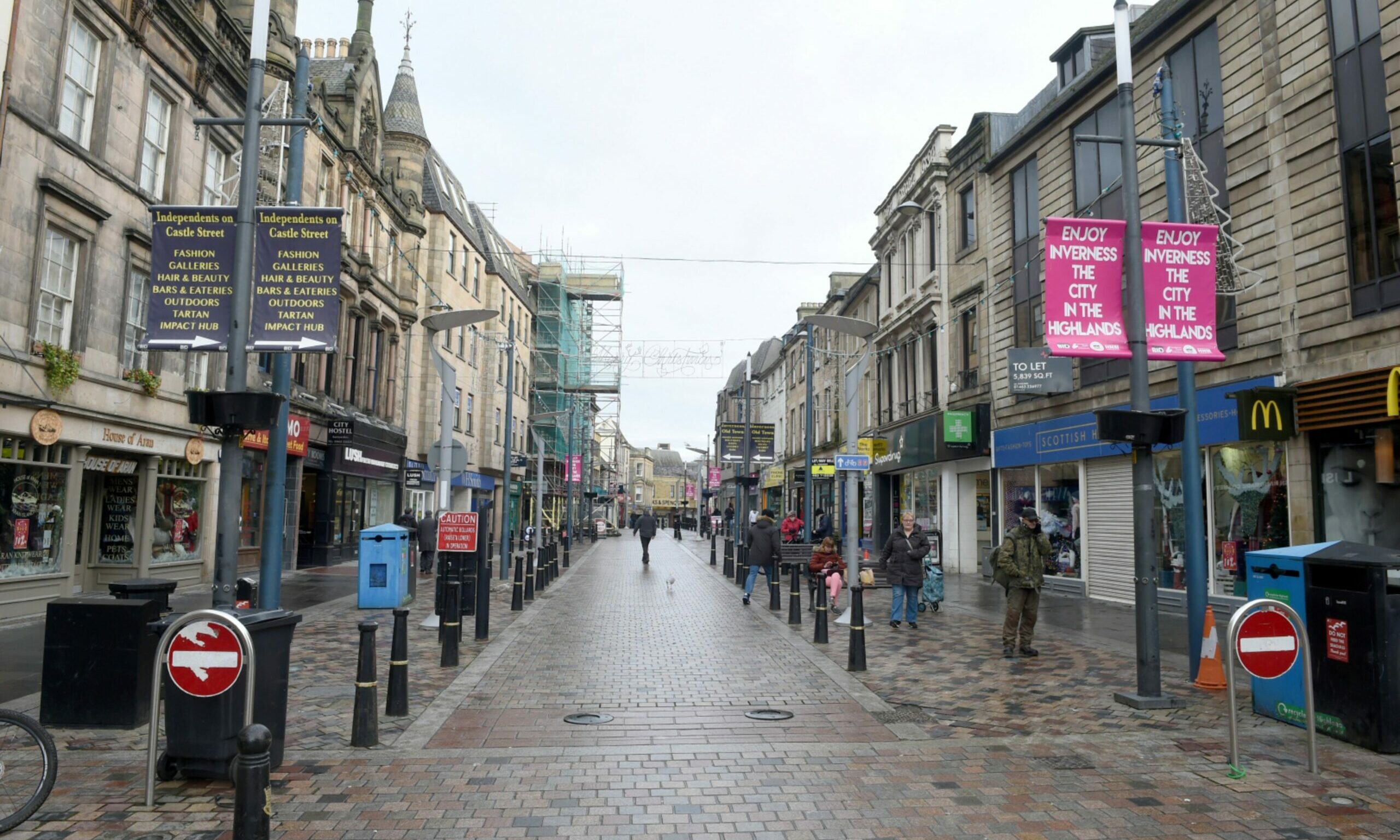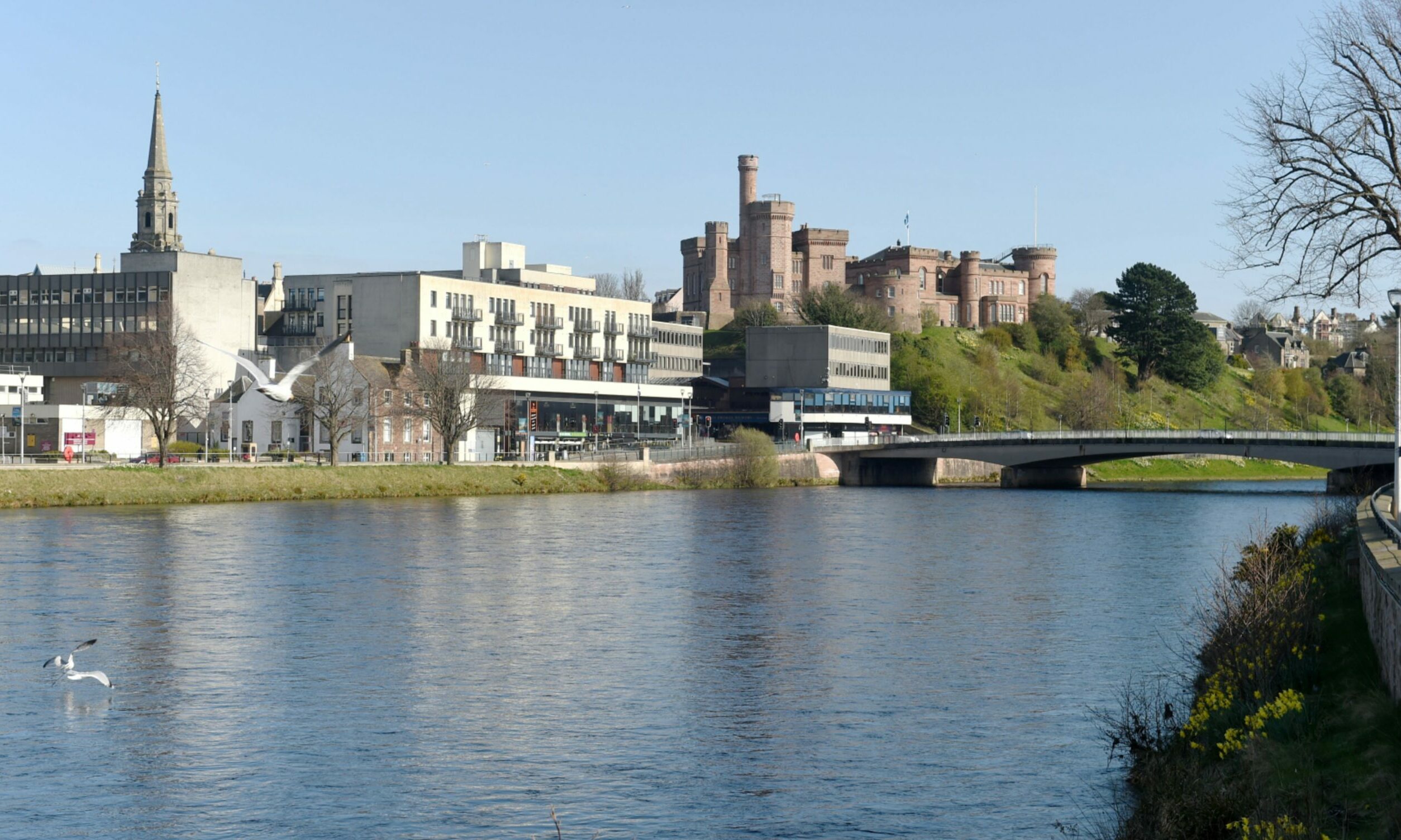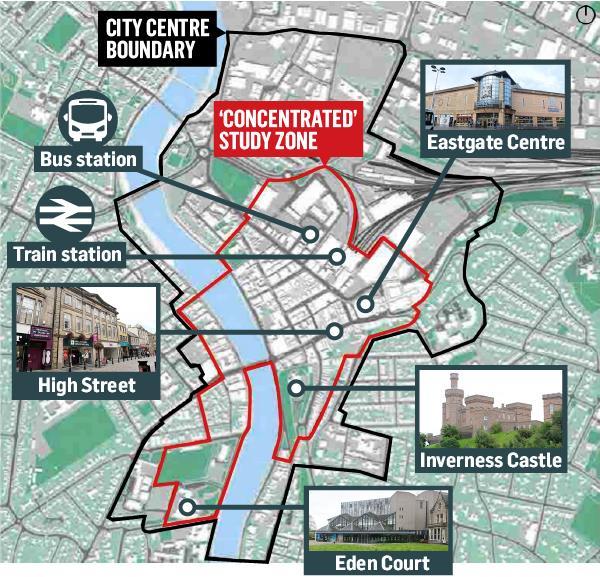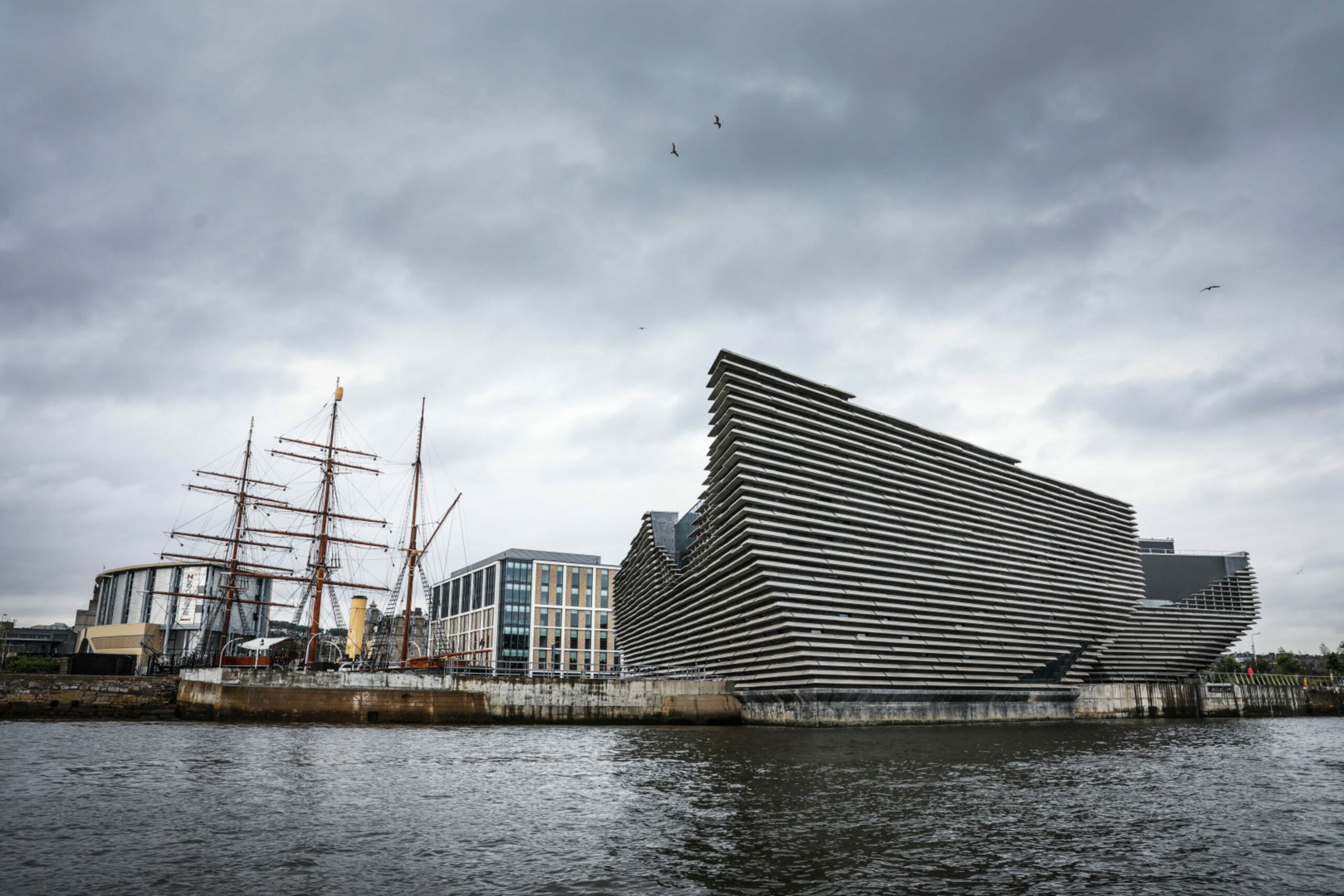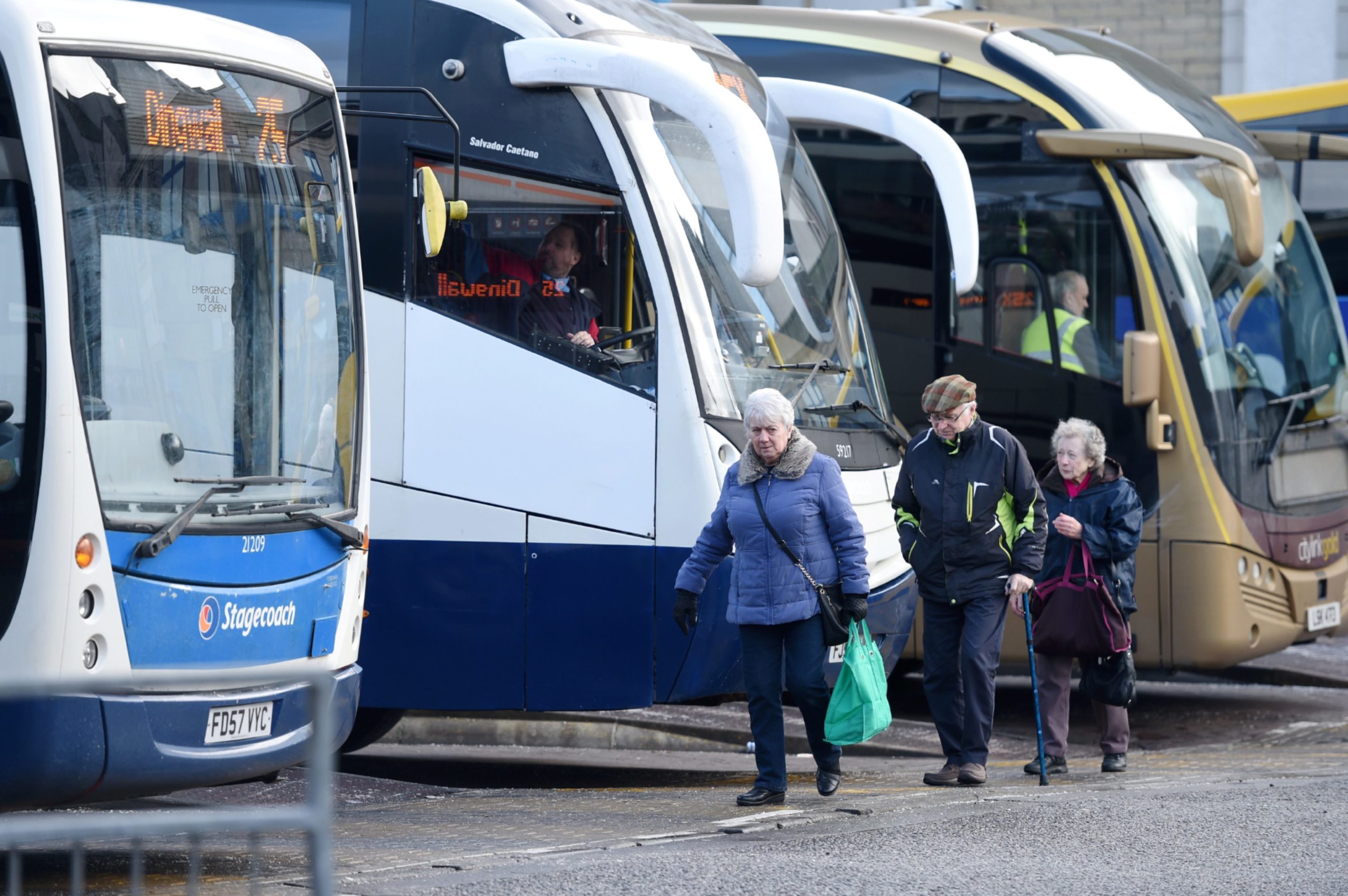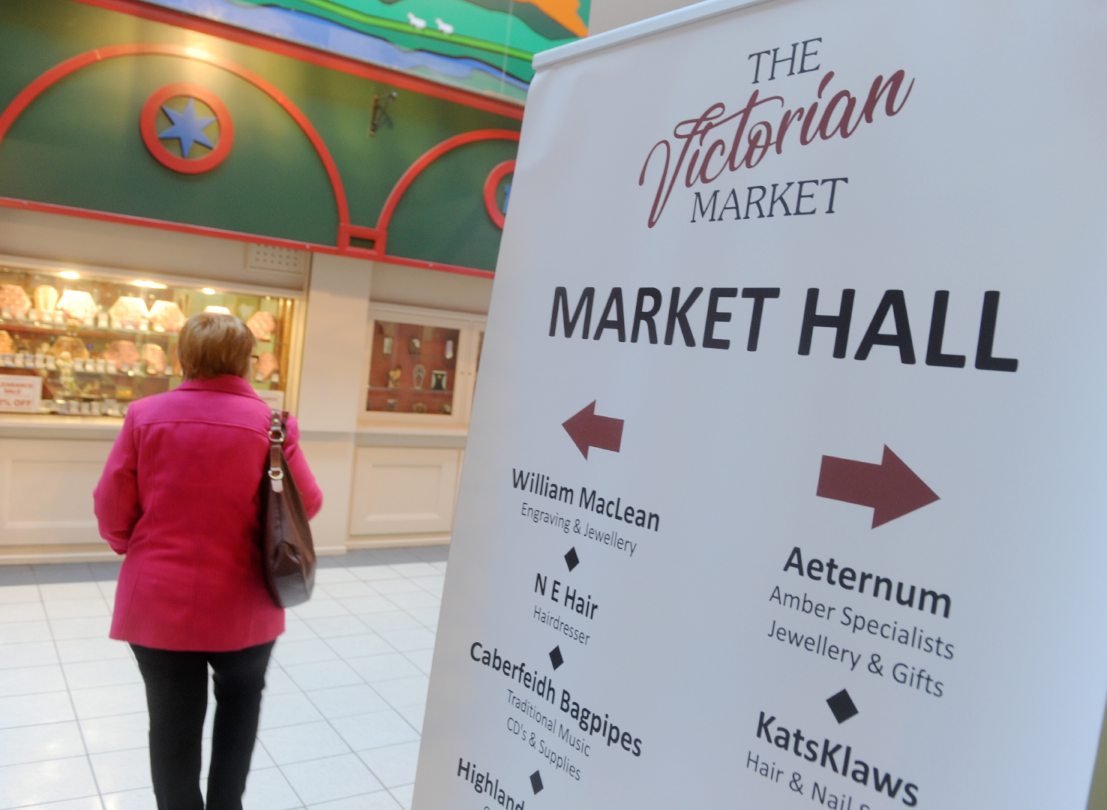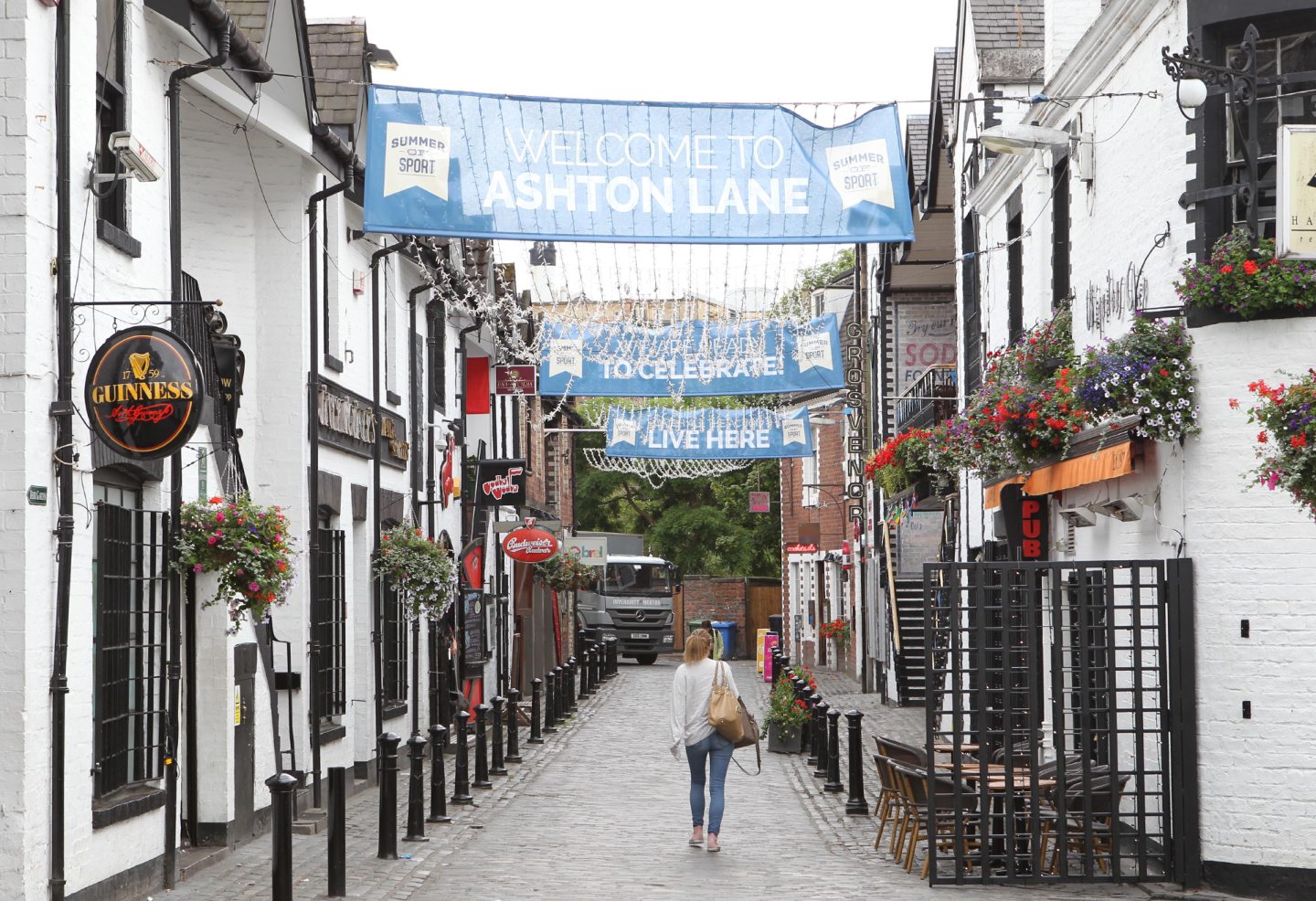A new proposal will be presented today outlining Highland Council’s masterplan for Inverness city centre.
Dubbed Scotland’s fastest growing city by Scottish Cities Alliance, you could be forgiven for thinking all is rosy in the Highland capital.
Instead, Highland Council is now seeking to get a handle on its largest area through a “bold and ambitious strategy”.
Today, the city of Inverness committee meets with the 200-page masterplan on the table.
Here is a snapshot of all you need to know:
Inverness has like other cities and towns come to discover that retail space has been easily discarded with no ready-made replacements willing to step in.
As such, the local authority has recognised a need to move away from a retail focus and is actively exploring how to diversify its offering.
Need to diversify and offer a ‘wider dynamic range of uses’
Highland Council has said: “There is a need to diversify the offer and introduce a wider dynamic range of uses such as community and healthcare”.
Any plan moving forward will be “specific to needs of Inverness” and will not be a one-size-fits-all solution.
The local authority accepts there is insufficient civic and greenspace, whilst identifying that the River Ness is a key asset and “more should be made of it to maximise its potential”.
Highland Council says the purpose behind the masterplan is to assess how the city centre is performing; to identify interventions already underway to address shortcomings and to identify ambitious potential future projects.
The masterplan has been hailed as a “bold and ambitious strategy for Inverness city”, with the plan emerging as a result of the pandemic.
The local authority says the key deliverable is to establish how the city centre can continue to be a vibrant, healthy and attractive place to work, live and do business.
The ethos of the document is to promote Inverness as “the hub of economic, social and cultural activity in Highland”.
What area is the council focusing on?
A concentrated area of study has been established by Highland Council for the purposes of its study.
The epicentre of the area includes Academy Street, Bank Street and High Street, with the area spanning north to include the city’s bus and rail stations.
The area also spans to the south to include the famed castle and the area opposite, as well as stretching along the River Ness from Greig Street to Eden Court.
What are the key outcomes?
Highland Council has outlined five areas it wishes to achieve by implementing the masterplan.
These are:
- The city centre is recognised as the prime destination for people and businesses to invest their time and money
- It provides welcoming mixed-use neighbourhoods that provide quality homes for young people, families and older people
- It is an attractive, healthy built and natural environment where people can meet, dwell and socialise in safe accessible public spaces
- Regeneration and new development in the city centre facilitates a just transition to a low carbon, green and circular economy
- It provides a safe place that is easy to walk and wheel around, where public transport is accessible, and vehicles do not dominate available space.
How will the council achieve these outcomes?
Highland Council has said it will rebalance the offering in Inverness city centre.
It will do this by focusing on key areas, whilst “reducing and concentrating retail space rather than propping up an old retail led approach”.
The local authority has outlined that housing is a “fundamental component of a successful, vibrant and mixed use place”.
Creation of a range of properties in the city centre area is considered key in supporting a 24-hour economy as well as providing “natural surveillance” of city streets.
It would also bring residents back into the heart of the city centre after recent statistics suggested the population in Inverness city centre had dropped by 6.6% over the course of the past decade.
Inverness is a fast-growing city, so why is the population shrinking in its centre?
Highland Council has stressed that any development would require a mix of private for sale, affordable, social housing, elderly supported and sheltered, and student accommodation.
The reasoning behind this is to prevent a monocultural residential offering.
Highland Council say that the provision of accommodation would also support the desire to increase into the evening economy.
Activity at street level ‘vital’
Highland Council say improving ground floor activation of key streets would “support the expanding residential community” and can provide a “strong, attractive retail mix within a right sized offer”.
A move away from major national chains to more localised independent retailers is considered one way of strengthening the resilience of the city centre.
Highland Council argues: “Activity at street level is vital to create a vibrant town/city centre and we can no longer rely on retail alone to fulfil this need.”
Strengthening the evening economy
As part of plans to strengthen the evening economy, Highland Council is suggesting transforming offering beyond the retail focus to encourage other uses outwith typical hours.
It argues this focus has led to the creation of “empty and unwelcoming environments once the shops are closed”, with Inverness a “prime example of this”.
Currently, most retail operators work between 9am and 6pm, however, plans would encourage this to stretch into the evenings.
Highland Council argues that a good evening economy encourages footfall, increases passive surveillance and greatly improves the local economy.
New performance venues
Creating new performance venues is also cited as a way of strengthening the evening economy, as well as enhancing the city’s offering.
Replicating a similar initiative from Glasgow is included in the masterplan.
St Lukes, near to the city’s famed Barrowlands, was transformed in 2013 as the dormant church was transformed into a multipurpose music venue, bar and kitchen.
Up to 600 can be accommodated for at standing gigs, with 300 if seated.
Highland Council has included it as a case study example of how the building’s renovation has revitalised the community while maintaining many of its stunningly rendered original features.
Improve existing and create new cultural offers
Comparisons have been drawn with Dundee where the V&A centre serves as an important draw to the city of discovery.
By creating offerings, the local authority hopes that by curating specific exhibitions and events, this would engage the community and entice those from further afield to visit.
Enhancing current spaces for safe gatherings would allow for all-year round activities and events to be put on, bringing locals and visitors together in a vibrant community offering.
Transform travel
Highland Council say by offering healthier, low carbon ways of moving around, such as improved space for walking, wheeling and cycling, and improved public transport, these changes could make a dramatic change to how safe and welcoming the city centre feels.
The local authority also feels it would go a significant way to improving accessibility to and use of the city centre by low car ownership groups.
Could Inverness Bus Station be relocated?
In the plan, there is already the suggestion of relocating Inverness’ bus station to be closer to the railway station to create “a more efficient and joined-up approach to public transport provision”.
The vacant space would provide the opportunity to create a new urban park for the benefit of the wider community.
Investment in Highland Council properties leading the way
Highland Council has said it is leading the way in supporting the city by investing in its own properties, including Inverness Town House, the Victorian Market and the conversion of Inverness Castle into a top tourism destination.
The Victorian Market revamp could become a destination for foodies with a contemporary European style food hall in construction.
Despite proving unpopular with some, the masterplan outlines the importance of spaces for people to walk, wheel and cycle on Academy Street as being important to a “permanent improvement of this integral city centre street will help the city’s recovery”.
Highland Council say data from sensors installed on Academy Street indicate that the majority of trips are made on foot, rather than by car.
Opportunity for Inverness’s own Ashton Lane
Again comparisons have been drawn to Glasgow, Melbourne and Brighton as the local authority has identified there is an opportunity to enhance the area where Baron Taylor’s Street meets Bank Lane.
The area, which dates back to 1821, has served as a key area in Inverness for centuries.
Similar to Glasgow’s famed lane, if enhanced Highland Council hopes the area could become a tourist friendly quarter with some of the finest food and beverage offerings.
Other opportunities include Falcon Square, Market Brae steps, development on the land that currently serves as the town house car park and developing Upper Bridge Street to “reduce the negative visual impact of the buildings on their sensitive surroundings”.
There is also optimism around the “innovative approach” at the River Ness Hydro Project, as well as approaches to enhance the Spectrum Centre and library.
A more diverse, inclusive city centre
An active travel network is proposed connecting key areas to the city centre, offering greater accessibility whilst promoting greener travel.
Several other ideas are included in the masterplan, which can be viewed here: https://www.highland.gov.uk/download/meetings/id/79077/5_inverness_strategy
With implementation of these changes, Highland Council hopes to create a city centre that is more diverse, inclusive and both socially and economically sustainable.
